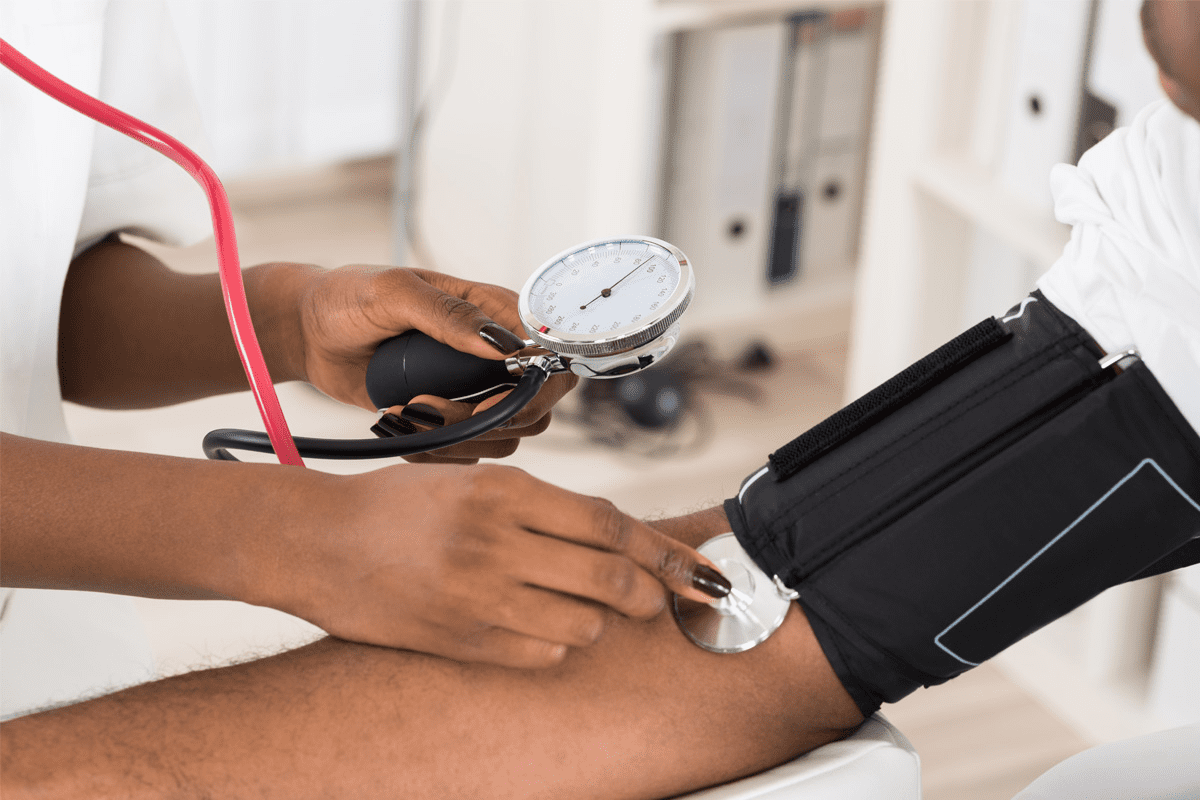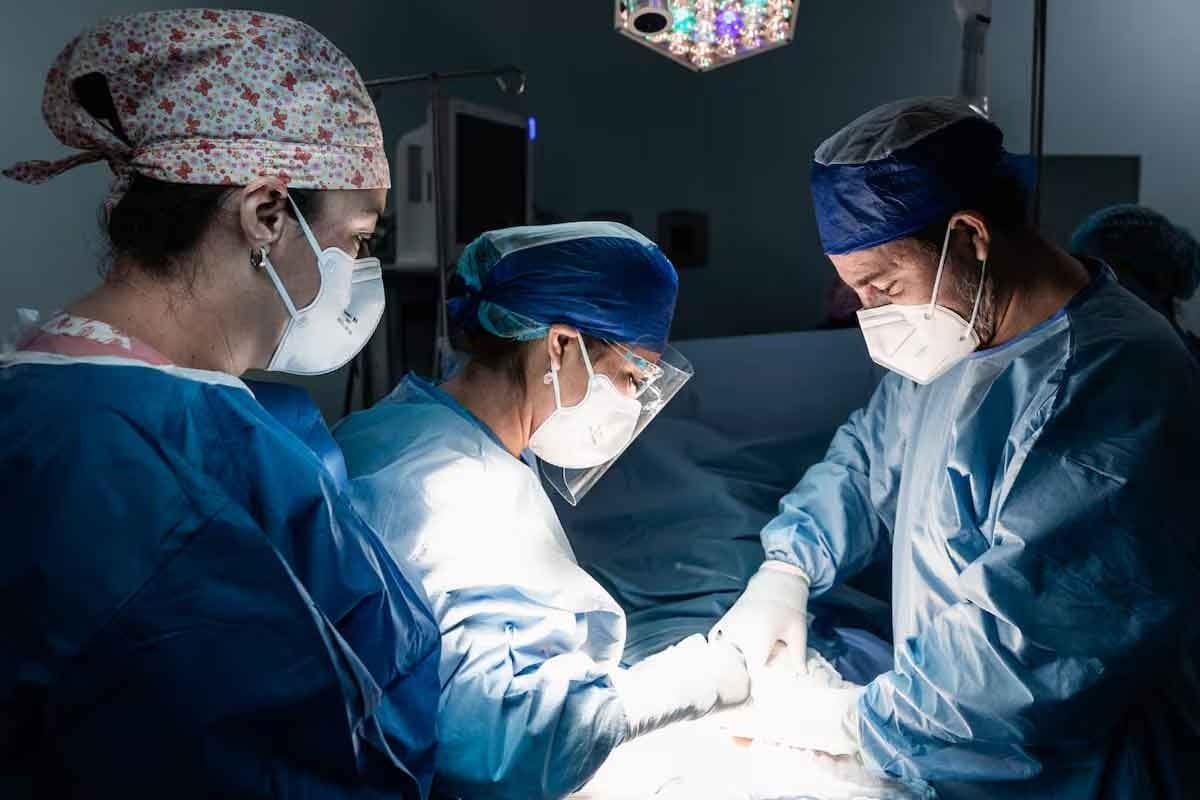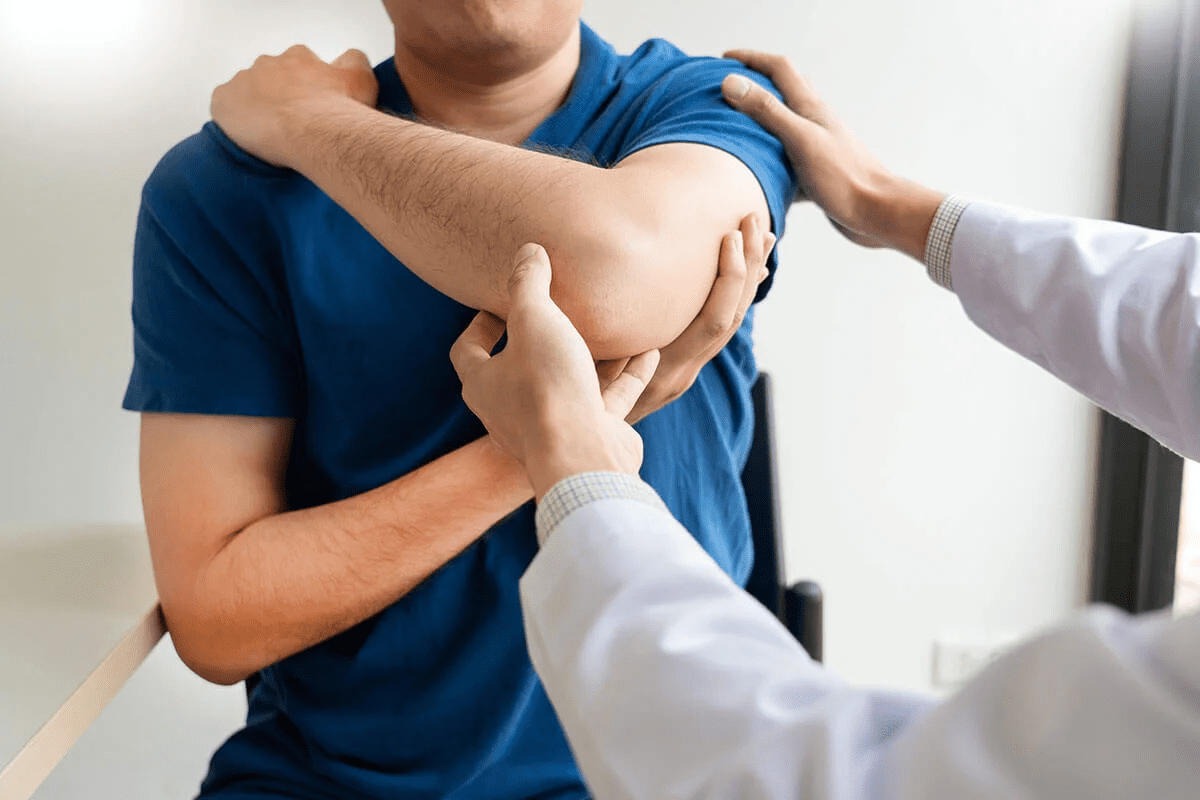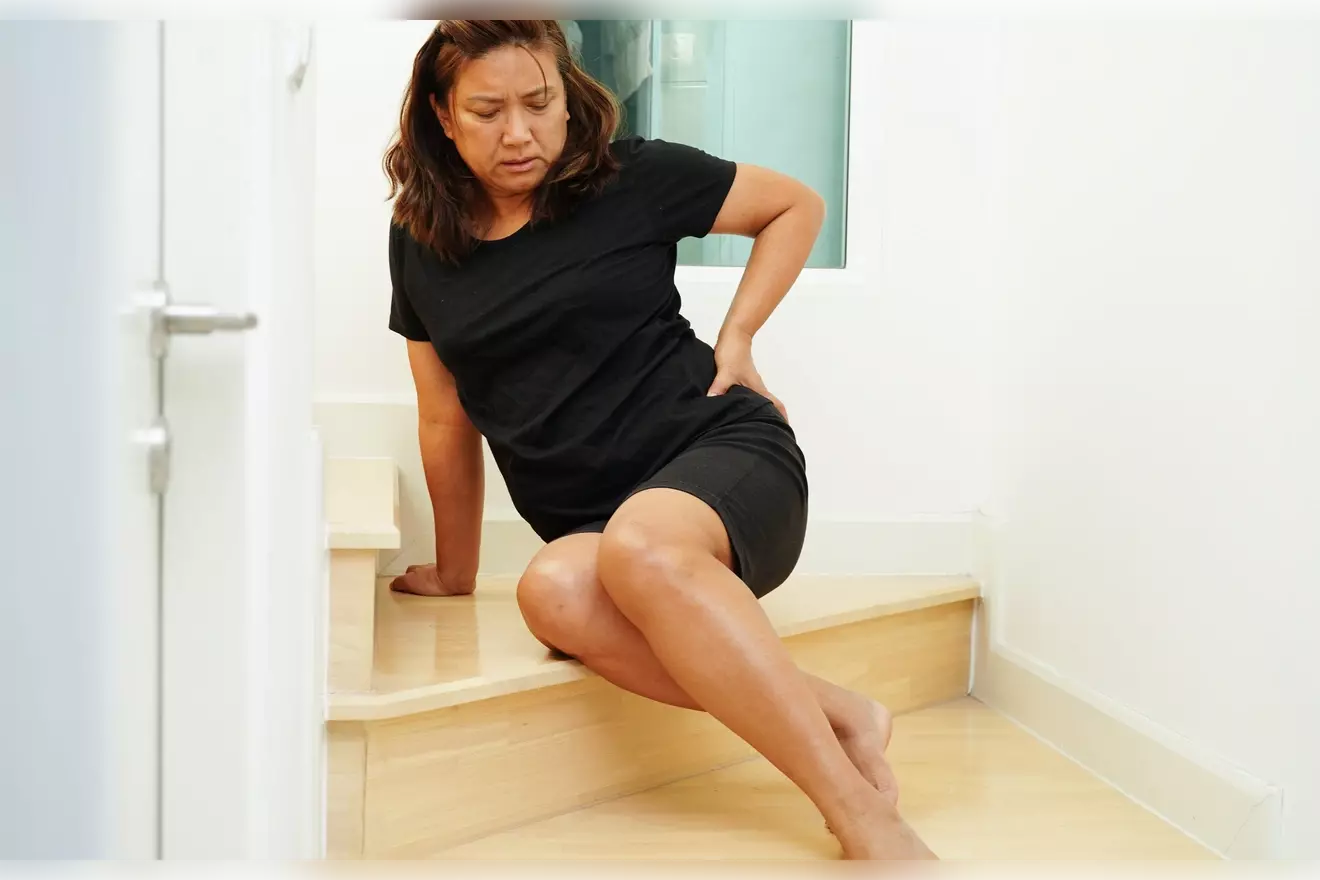Last Updated on November 26, 2025 by Bilal Hasdemir

Nearly 50% of cancer patients get adjuvant chemotherapy as part of their treatment. This type of chemotherapy is key in cancer care. It helps get rid of any cancer cells left after surgery or radiation.
The duration of adjuvant chemotherapy changes based on several things. These include the cancer type and stage, the patient’s health, and the treatment’s goals. Knowing how long adjuvant chemotherapy should last is vital for good cancer treatment.
Key Takeaways
- The duration of adjuvant chemotherapy varies based on cancer type and stage.
- Patient health and treatment goals influence adjuvant chemotherapy length.
- Adjuvant chemotherapy is a critical component of cancer treatment.
- Optimal duration of adjuvant chemotherapy improves treatment outcomes.
- Adjuvant chemotherapy duration recommendations vary among cancer types.
What Is Adjuvant Chemotherapy?
Adjuvant chemotherapy is a treatment given after the main therapy, like surgery. It helps prevent cancer from coming back. This treatment aims to kill any cancer cells left behind.
Definition and Purpose
The main goal of adjuvant chemotherapy is to lower the chance of cancer coming back. It targets tiny cancer cells that might have spread. This improves survival chances and avoids more severe treatments later.
Adjuvant chemotherapy goes through the blood to reach cancer cells all over the body. This is different from treatments like surgery or radiation, which focus on specific areas.
When Adjuvant Chemotherapy Is Recommended
Doctors decide on adjuvant chemotherapy based on several factors. These include the cancer type and stage, the patient’s health, and genetic markers. It’s usually for those at high risk of cancer coming back.
It’s often used for breast, colon, and some lung cancers. The treatment plan is made just for the patient, considering their condition and medical history.
Difference Between Adjuvant and Neoadjuvant Chemotherapy
Adjuvant and neoadjuvant chemotherapy are both used to treat cancer. But they are given at different times. Neoadjuvant chemotherapy is before the main treatment to make tumors smaller. Adjuvant chemotherapy is after to get rid of any cancer cells left.
| Chemotherapy Type | Timing | Purpose |
| Neoadjuvant Chemotherapy | Before main treatment | Shrink tumors |
| Adjuvant Chemotherapy | After main treatment | Eliminate remaining cancer cells |
Knowing the difference between these chemotherapies is key for patients to understand their treatment plans.
Adjuvant Chemotherapy Length: Typical Duration Ranges
Knowing how long adjuvant chemotherapy lasts is key for patients. It’s a big part of cancer treatment. It helps lower the chance of cancer coming back by getting rid of any left-over cancer cells.
Standard Treatment Timeframes
The time for adjuvant chemotherapy varies a lot. It depends on the cancer type and stage. For example, some breast cancer patients might get treatment for 3 to 6 months. Colon cancer patients might get it for 6 months.
Common treatment durations include:
- 3 to 6 months for early-stage breast cancer
- 6 months for colon cancer
- 3 to 4 months for some cases of ovarian cancer
Short-Course vs. Long-Course Treatment
Choosing between short and long adjuvant chemotherapy depends on many things. These include the cancer type, stage, and the patient’s health. Short treatments are for lower-risk cancers. Long treatments are for more aggressive or advanced cancers.
Key differences between short-course and long-course treatments include:
- Duration: Short treatments last a few months, while long treatments go beyond six months.
- Intensity: Long treatments often have more intense chemotherapy.
- Side effects: Longer treatments can cause more side effects over time.
Evolution of Treatment Duration Guidelines
Guidelines for adjuvant chemotherapy have changed over time. Now, studies focus on finding the right balance between treatment length and quality of life. The goal is to make treatments fit each patient’s needs and cancer type.
Recent research has led to changes in treatment protocols, such as:
- Reducing treatment duration for some breast cancer patients without losing effectiveness
- Looking into shorter treatments for colon cancer
- Adjusting treatment lengths based on genetic and biomarker information
Factors That Determine How Long Adjuvant Chemo Takes
Many things affect how long adjuvant chemotherapy lasts. These include the cancer’s type and stage, the patient’s age, and their health. Knowing these factors helps patients understand their treatment better.
Cancer Type and Stage
The type and stage of cancer are key in deciding how long chemotherapy lasts. Each cancer type reacts differently to treatment. The cancer’s stage also affects how intense the treatment needs to be.
For example, early-stage breast cancer might need shorter chemotherapy than more advanced stages. Some cancers, like testicular cancer, have different treatment plans than others, like colon cancer.
| Cancer Type | Typical Stage | Adjuvant Chemo Duration |
| Breast Cancer | Early Stage | 3 to 6 months |
| Colon Cancer | Stage III | 6 months |
| Lung Cancer | Stage II-III | 4 to 6 cycles |
Genetic and Biomarker Considerations
Genetic and biomarker factors are also important in deciding chemotherapy length. These markers show how aggressive the cancer is and how it might react to treatment.
In breast cancer, biomarkers like HER2 can change treatment plans. Patients with HER2-positive breast cancer might get targeted therapy along with chemotherapy. This can affect how long treatment lasts.
Patient Health Status and Age
A patient’s health and age are also big factors in chemotherapy length. Older patients or those with health issues might need treatment changes. This helps manage side effects and ensures they can handle treatment.
Younger patients might be able to handle more intense treatments. Their health is closely watched during treatment. Changes are made to balance treatment success with their quality of life.
The Structure of Adjuvant Chemotherapy Regimens
It’s important for patients to know about adjuvant chemotherapy’s structure. This treatment aims to lower cancer return risk after main treatments like surgery.
Understanding Cycles and Sessions
Adjuvant chemotherapy is given in cycles. Each cycle has treatment and rest periods. The cycle number and length depend on the cancer type, stage, and drugs used.
A cycle is the treatment followed by rest. For example, a patient might get chemotherapy on the first day and then rest for 2 or 3 weeks. The session is when chemotherapy is given, lasting from minutes to hours.
Frequency of Treatments
The treatment frequency varies by regimen. Some are weekly, others every 2 or 3 weeks. This choice depends on the drugs, patient health, and how well they tolerate treatment.
For instance, a common regimen might be chemotherapy every 2 weeks for 6 cycles. This makes the treatment last about 12 weeks, not counting extra treatments or follow-up care.
Dosing Schedules and Intensity
Dosing schedules and intensity are key in adjuvant chemotherapy. The dose intensity is how much drug is given per time unit. Higher intensity can be more effective but also raises side effect risks.
The dosing schedule can change based on how well the patient responds and tolerates treatment. Some use a dose-dense approach, where treatments are closer together to increase intensity.
- The specific drugs used and their dosages are determined based on the type and stage of cancer.
- Patient factors such as age, overall health, and previous treatments also influence the dosing schedule.
- Regular monitoring and adjustments are made as needed to balance efficacy and tolerability.
Knowing about adjuvant chemotherapy’s structure helps patients understand their treatment better. This knowledge aids in making informed decisions about their care.
Adjuvant Chemotherapy for Breast Cancer
Adjuvant chemotherapy for breast cancer has changed a lot over time. Doctors keep studying to make treatments better and shorter. This treatment is given after surgery to lower the chance of cancer coming back.
Standard Protocols and Durations
Adjuvant chemotherapy for breast cancer usually involves a mix of drugs. The length of treatment depends on the treatment plan and how well the patient responds. Common plans include AC-T (Adriamycin, Cyclophosphamide, followed by Taxotere) and TC (Taxotere, Cyclophosphamide). These can last from 12 to 24 weeks.
The AC-T plan is given for 12 to 16 weeks, with treatments every 2 or 3 weeks. The choice of plan and length depends on the cancer stage, hormone receptor status, and the patient’s health.
Recent Changes in Treatment Length
Studies are looking into making adjuvant chemotherapy shorter or longer. They want to make sure the treatment is effective but not too long or harsh.
Genomic testing is now used to tailor treatment to each patient. This makes treatment more personal.
The TAILORx Study and Its Impact on Treatment Duration
The TAILORx study was a big deal. It looked at using genomic testing (Oncotype DX) to decide on adjuvant chemotherapy. It found that some patients with a certain score didn’t need chemotherapy.
This study changed how we think about adjuvant chemotherapy. It means some patients can avoid unnecessary treatment and its side effects.
| Treatment Regimen | Typical Duration | Frequency of Treatments |
| AC-T | 12-16 weeks | Every 2 or 3 weeks |
| TC | 12 weeks | Every 3 weeks |
| TAC | 18 weeks | Every 3 weeks |
Adjuvant Chemotherapy for Colon Cancer
Adjuvant chemotherapy in colon cancer has seen a lot of research, mainly about how long it should last. Colon cancer is a big health issue. Adjuvant chemotherapy helps lower the chance of cancer coming back after surgery.
3 vs. 6 Months of Treatment
There’s a big debate on how long adjuvant chemotherapy should last for colon cancer. The old standard was 6 months, but some studies suggest 3 months might work too. The choice between 3 or 6 months depends on the cancer stage, genetic markers, and the patient’s health.
Benefits of shorter treatment: It can mean less side effects and a better quality of life.
Considerations for longer treatment: It might keep cancer under control better in some high-risk patients.
IDEA Collaboration Findings
The International Duration Evaluation of Adjuvant Chemotherapy (IDEA) collaboration studied if 3 months of treatment is as good as 6 months. They found that for some patients, like those with lower-risk disease, 3 months is just as effective as 6 months.
- Patients with low-risk disease might do well with shorter treatment.
- Those with high-risk disease might need the standard 6 months of treatment.
Risk-Based Duration Approaches
Using a risk-based approach to decide how long adjuvant chemotherapy should last is getting more popular. This method looks at how likely a patient is to have cancer come back and adjusts the treatment length.
| Risk Category | Recommended Treatment Duration |
| Low Risk | 3 months |
| High Risk | 6 months |
This approach helps doctors find the right balance between treating the cancer well and avoiding too many side effects. It can lead to better results for patients.
Adjuvant Chemotherapy for Other Common Cancers
Many common cancers benefit from adjuvant chemotherapy. The treatment length varies based on the cancer type and the patient’s health. Knowing about adjuvant chemotherapy for these cancers can help patients understand their treatment better.
Lung Cancer Treatment Duration
Lung cancer patients often get adjuvant chemotherapy after surgery. This treatment aims to remove any cancer cells left behind. Lung cancer treatment usually lasts 3 to 4 months, with 3 to 4 cycles of chemotherapy.
Ovarian Cancer Protocols
Ovarian cancer patients often get adjuvant chemotherapy after surgery. This treatment targets cancer cells in the abdomen. The usual treatment lasts 4 to 6 months, with 3 to 6 cycles of chemotherapy, each lasting 3 weeks.
In some cases, intraperitoneal chemotherapy is used. This involves delivering chemotherapy directly into the abdominal cavity.
“The use of adjuvant chemotherapy in ovarian cancer has been shown to improve overall survival and reduce the risk of recurrence,” according to
Pancreatic Cancer Adjuvant Therapy
Pancreatic cancer patients get adjuvant chemotherapy after surgery. This treatment aims to kill any remaining cancer cells and prevent recurrence. The usual treatment lasts 6 months.
Common chemotherapy regimens include Gemcitabine and FOLFIRINOX. Recent studies are looking into extending treatment, but 6 months is the standard.
- Gemcitabine-based regimens
- FOLFIRINOX chemotherapy
- Clinical trials exploring new adjuvant therapies
Melanoma Adjuvant Treatment Timeframes
In melanoma, adjuvant therapy is used to prevent recurrence in high-risk patients after surgery. The treatment duration varies based on the therapy used. Immunotherapies like interferon and checkpoint inhibitors are common, lasting 1 to 3 years.
Targeted therapies are also being explored for melanoma with specific genetic mutations. As research evolves, new hopes and options for patients are emerging.
What to Expect During Each Adjuvant Chemo Session
Starting adjuvant chemotherapy is a big step. Knowing what each session involves can help a lot. These sessions aim to get rid of any cancer cells left behind, lowering the chance of cancer coming back.
Typical Appointment Length
The time you spend in a chemotherapy session can vary a lot. It depends on the type of cancer, the treatment plan, and your health. Sessions can last from a few minutes to several hours.
Some chemotherapy drugs are given quickly, while others take longer. Knowing how long your sessions will be can help you plan your day and feel less stressed.
The Infusion Process
The infusion process is key in adjuvant chemotherapy. It involves putting chemotherapy drugs directly into your bloodstream through a vein. This can happen in different ways, such as:
- Peripheral IV: A common method where a needle is inserted into a vein in the arm or hand.
- Central line or port: For longer treatment, a central line or port is used. This makes it easier without needing to insert needles often.
Pre and Post-Session Procedures
Before each session, you’ll go through some steps to make sure you’re safe and the treatment works well. These steps include:
| Procedure | Description |
| Vital sign checks | Monitoring blood pressure, temperature, and heart rate. |
| Blood tests | Checking for enough blood cells. |
| Medication review | Looking at your current medications to avoid bad reactions. |
After the session, you’ll be watched for a bit to see if you have any immediate reactions. You’ll get instructions on how to take care of yourself after the session. This helps manage side effects and makes recovery easier.
Knowing what to expect in each adjuvant chemotherapy session can help you feel more ready. It makes the treatment process less scary and more manageable.
Recovery Time Between Adjuvant Chemo Cycles
The time between adjuvant chemotherapy cycles is key for recovery and planning. The body heals from chemotherapy’s effects, and how well the treatment works is checked.
Physical Recovery Patterns
Recovery times between cycles differ for each patient. Age, health, and the type of chemotherapy play big roles. The body must refill blood cells and get over treatment side effects.
Common physical recovery patterns include:
- Replenishment of blood cells, including white blood cells, red blood cells, and platelets.
- Recovery from fatigue, a common side effect of chemotherapy.
- Healing of any mucosal surfaces affected by chemotherapy.
Managing Side Effects Between Treatments
It’s vital to manage side effects between cycles. Good management boosts quality of life and readies patients for the next cycle.
Strategies for managing side effects include:
- Medications to alleviate nausea, pain, and other symptoms.
- Lifestyle adjustments, such as dietary changes and gentle exercise.
- Rest and relaxation techniques to mitigate fatigue and stress.
When Recovery Takes Longer Than Expected
Recovery might take longer than expected for some. This can be due to severe side effects, health issues, or intense chemotherapy.
When recovery is prolonged, healthcare providers may:
- Adjust the chemotherapy schedule to allow for more recovery time.
- Implement additional supportive care measures to manage side effects.
- Consider alternative treatments or modifications to the current regimen.
Knowing and managing recovery time between cycles is key for better treatment results and care.
Impact of Adjuvant Chemotherapy on Daily Life
Adjuvant chemotherapy can change daily life a lot. It affects work and social activities. Patients often have to adjust their routines and lifestyles a lot.
Work and Social Considerations
Chemotherapy can make it hard to work and socialize. A study in the Journal of Clinical Oncology found that
“about 70% of patients reported some work impairment during chemotherapy.”
Journal of Clinical Oncology
. Patients might need to take time off or adjust their work hours for treatments and recovery.
Key considerations for work and social life include:
- Managing fatigue and other side effects
- Communicating with employers and colleagues about needs
- Planning for transportation to and from treatment
- Adjusting social plans and activities
Planning Around Treatment Schedules
Planning is key during adjuvant chemotherapy. Patients must coordinate treatment with work, family, and social life.
Strategies for planning around treatment schedules:
- Create a calendar that includes treatment dates and times
- Arrange for support during treatment days
- Plan ahead for managing side effects
- Communicate with family and friends about needs
Long-term vs. Short-term Lifestyle Adjustments
Chemotherapy requires both short-term and long-term lifestyle changes. Some changes are temporary, while others last longer.
Long-term adjustments may include:
- Permanent changes in work or career plans
- Ongoing management of treatment-related side effects
- Shifts in dietary habits and exercise routines
Understanding the effects of chemotherapy helps patients prepare and make informed decisions about their care.
Recent Research on Optimal Adjuvant Chemotherapy Length
Recent studies aim to find the best length for adjuvant chemotherapy. They want to make sure it works well without harming patients too much. Finding the right length is key to better cancer treatment.
Trend Toward Shorter Durations
Research now leans towards shorter adjuvant chemotherapy for some cancers. Shorter treatments can be as good as longer ones for some patients. For example, 3 months of adjuvant chemotherapy might be enough for colon cancer patients instead of the usual 6 months.
The IDEA collaboration studied over 12,000 colon cancer patients. They found that shorter treatment durations work just as well for some patients. This means shorter treatments could reduce side effects without losing effectiveness.
Balancing Efficacy and Quality of Life
Finding the right chemotherapy length is hard. It’s about keeping treatment effective while keeping patients healthy. Longer treatments can lead to more side effects, affecting patients’ long-term health.
In breast cancer, the TAILORx trial helps tailor treatments. It uses genetic factors and risk assessments to decide the best treatment length for each patient.
Personalized Duration Approaches
The future of chemotherapy is personalized. Treatments will be tailored to each patient’s needs. This includes their cancer type, stage, and genetic markers.
Personalized treatments aim to balance benefits and risks. This approach can improve patient outcomes and quality of life.
Managing Treatment Delays and Modifications
Managing adjuvant chemotherapy well is key to the best results. Handling delays and changes in treatment is a big part of this. Many things can affect treatment, like the cancer type, health, and other health issues.
Healthcare providers can make better choices by knowing these factors. This helps in getting the best results from treatment.
Follow-Up Care After Completing Adjuvant Chemotherapy
After finishing adjuvant chemotherapy, patients start a key part of their treatment. This time is important for checking how well the treatment worked. It also helps manage side effects and find any early signs of cancer coming back.
Immediate Post-Treatment Period
The first days after treatment are all about watching for side effects. These can include feeling very tired, losing hair, or nerve problems. Doctors will see patients often to look for cancer signs and talk about any worries.
Long-term Monitoring Schedule
How often to see a doctor after treatment varies. It depends on the cancer type and how advanced it was. Usually, doctors want to see patients more often in the first few years.
Signs That Require Medical Attention
It’s important for patients to know about signs that mean they should see a doctor right away. These include ongoing pain, fever, or losing a lot of weight. If any of these happen, they should reach out to their doctor fast.
| Aspect | Description |
| Immediate Post-Treatment | Monitoring for side effects and recurrence |
| Long-term Monitoring | Regular check-ups for early detection of recurrence |
| Signs Requiring Attention | Unusual pain, fever, significant weight loss |
Conclusion: Navigating Your Adjuvant Chemotherapy Journey
Knowing how long adjuvant chemotherapy lasts is key for those starting their cancer treatment. The time needed varies by cancer type, stage, and the patient’s health.
Chemotherapy plans are made to fit each person’s needs. They can last from a few months to many cycles. Studies aim to find the right balance between treatment success and quality of life.
Learning about adjuvant chemotherapy helps patients understand their journey. This knowledge lets them make better choices about their care. It improves their overall experience with cancer treatment.
It’s important to keep up with new research on adjuvant chemotherapy. Patients should talk to their doctors to find the best treatment plan for them.
FAQ
What is the typical duration of adjuvant chemotherapy?
The time needed for adjuvant chemotherapy varies. It depends on the cancer type and stage, and the treatment plan. It can last from a few weeks to several months.
How is the length of adjuvant chemotherapy determined?
Several factors decide how long adjuvant chemotherapy lasts. These include the cancer type and stage, the patient’s health, and the treatment goals. The oncologist will consider these to find the best treatment length.
What is the difference between adjuvant and neoadjuvant chemotherapy?
Adjuvant chemotherapy is given after the main treatment, like surgery. It aims to lower the chance of cancer coming back. Neoadjuvant chemotherapy is given before the main treatment. It aims to shrink the tumor, making it easier to remove.
How often are adjuvant chemotherapy sessions scheduled?
The schedule for adjuvant chemotherapy sessions varies. Some get treatment every week, while others get it every 2-4 weeks.
Can the duration of adjuvant chemotherapy be adjusted?
Yes, the length of adjuvant chemotherapy can change. This is based on how the patient responds to treatment, side effects, and other factors. The oncologist can adjust the treatment plan as needed.
What are the common side effects of adjuvant chemotherapy?
Common side effects of adjuvant chemotherapy include fatigue, nausea, and hair loss. The specific side effects and how severe they are can vary. This depends on the type of chemotherapy and the patient.
How does adjuvant chemotherapy impact daily life?
Adjuvant chemotherapy can affect daily life in many ways. It can cause fatigue, changes in appetite, and emotional challenges. Patients may need to adjust their work and social schedules to fit treatment.
What is the recovery time between adjuvant chemotherapy cycles?
The time needed to recover between adjuvant chemotherapy cycles varies. It depends on the individual patient and the treatment plan. Some recover quickly, while others need more time.
Can adjuvant chemotherapy be used in combination with other treatments?
Yes, adjuvant chemotherapy is often used with other treatments. This includes surgery, radiation therapy, or hormone therapy. It aims to get the best possible outcome.
How is the effectiveness of adjuvant chemotherapy measured?
The success of adjuvant chemotherapy is measured in several ways. It includes checking the cancer status, like tumor size and markers. It also looks at any side effects or complications.
References
- Geyer, C. E., Jr., Jeong, J. H., Mamounas, E. P., Rastogi, P., Saphner, T., Beyer, J. N., Fehrenbacher, L., Atkins, J. N., Emons, G., Gross, H. M., Walshe, J. M., Pasic, I., Kelly, R., Zaucha, J. M., Zuziak, K. L., Paik, S., Swain, S. M., Wickerham, D. L., Gralow, J. R., … Wolmark, N. (2021). Five years of endocrine therapy plus adjuvant chemotherapy for patients with hormone receptor“positive, HER2-negative breast cancer with a high recurrence score. Journal of Clinical Oncology, 39(10), 1163“1167.https://ascopubs.org/doi/full/10.1200/JCO.20.02613






